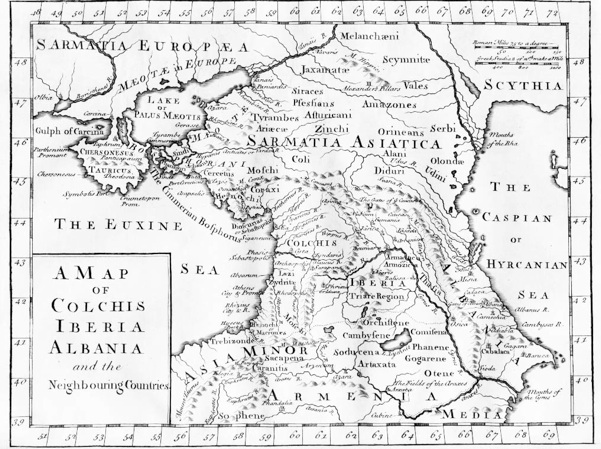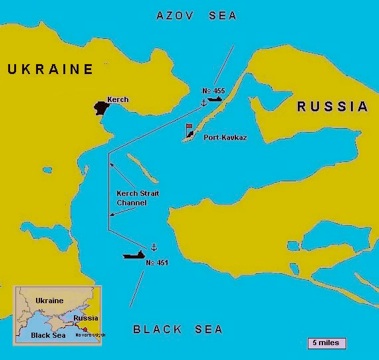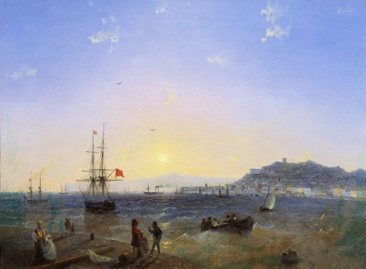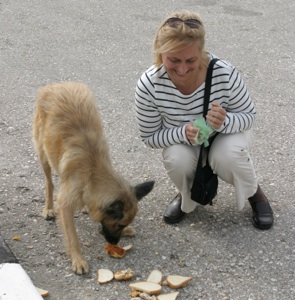2007


It takes much, much longer to get to Kerch than one would think, as it is apparently served by the world's slowest train (a full day's trip from Simferopil). Luckily, the road was straight, goat-lined, though a steppe-like area, and it only took two hours to get there from Feodosia by van. Kerch is, literally, the end of the road. It is on the strait1 that connects the Sea of Azov to the Black Sea, and just a stone's throw from Russia2.

Oksana at the official entrance to Kerch
Kerch is one of the most ancient Ukrainian cities. Archeological digs reveal that the area was first inhabited in 17th–15th centuries BC. In 7th century BC, Greek colonists from Miletus founded a city-state named Panticapaeum (which means "fish road"), which became part of the Hellenistic Bosporan Kingdom. It was destroyed by the Huns, and then ruled by the Byzantines, Khazars, Tmutarakan, Mongols, Genoese, Ottomans, and finally Russians and Ukrainians. It's not a simple history.

Its main attraction3 is a museum of the works of Ivan Aivazovsky4, whom everyone in the former Soviet Union has heard of and considers a great painter, but who is virtually unheard of in the rest of the world.
We didn't have many opportunities to experience the myriad delights5 of Kerch, although a few in the group did go out drinking on the waterfront one evening, a short walk from our high rise government hotel in the industrialized waterfront (above, right). We did get views of Russia from our hotel windows, though.

The children were not true orphans, but from very poor families6. Because they come from such a poor background, the kids think this school is paradise, even though the conditions are not very good7. On our tour we noted large dormitory rooms with wall to wall beds (18 in some), and bad ones at that. Since these kids are used to sleeping on the floor, they consider sleeping in a bad bed with 18 kids in the room to be a huge improvement.
We spent a pleasant day here, as the internat had a pleasant campus with trees, flowers, and a bust of Lenin (still pretty standard in Crimea, at least until the Tatars take over). We were told the kids raise the flowers and other plants in the greenhouse, plant them in the beds, and do all the landscaping and gardening work themselves – useful skills for when they return to the village. Because the children all had mental disabilities, Peggy handed out coloring books and crayons to all of them, regardless of age, and they all enjoyed them hugely.

Our shopping trip netted us a heavy-duty washing machine, a water heater, a refrigerator for the clinic, vacuum cleaners, a steam cleaner, and an iron. We opted to have most of these items delivered, as our van was not THAT big.

The new director is a genial, genuine guy who really works hard to do what he can for his kids. He had take the RFI more seriously than most–not only had he thought long and hard about what his orphanage could use, but he had summoned the vendors to the campus to meet us when we arrived. He had decided that what he really wanted was a new pillow for each of his 300 children, a nice foam one to replace the nasty old feather ones. We met with the vendors, and negotiated with them to provide towels as well. The director then accompanied us into town to shop–he was a friend of the manager of the "Foxtrot" appliance store, so we had him call the man up and get us a really good discount. We purchased karaoke machines and TVs (1 each for the boys' and girls' hall) and a bunch of irons. Maryna and I had to try out the microphones, so we sang a loud and rousing rendition of "Chervona Ruta9" right there in the middle. The microphones passed inspection.



The highlight of the day was in the evening. It was Saturday night, so a disco had been arranged. A DJ came in from town, set up a sound system outdoors, and began playing. The kids mostly hung out, but some danced, mostly girls with other girls, and a few boys with our Peggy, Olenka and Irka. When the "break" music ("Free Stylin'") came on there was a roar of excitement – everyone gathered in a ring, and the break dance boys performed12 for us. It was a lovely end to a lovely day.


Break dancing in Kerch
Main UKRAINE Page
Main ROUTE Page
___________
-
1.This strait was known in ancient times as the Cimmerian Bosporus. It is a dangerous strait, the site of many shipwrecks. Even as I write, there is a search for survivors from the wreck of a Bulgarian ship which sank during a violent storm.

-
2.The Kerch strait was the site of a huge diplomatic dispute with Russia in 2003, when the Russians tried to build a dike to link the Russian Taman Peninsula with the Ukrainian island of Tuzla. It was an attempted land grab, pure and simple, as Moscow had long questioned Ukraine's sovereignty over the tiny island. President Kuchma cut short a visit to South America to fly home and deal with the situation, and Kyiv sent 14 gunboats and aircraft to patrol the area around the Ukrainian-Russian border, which is found 150 meters southeast of the shore of Tuzla. In the end, the Russians stopped construction.

-
3.One attraction missing from Kerch is a McDonald's restaurant. They have sprung up throughout Ukraine like mushrooms, but have not made it all the way to Kerch yet. We discovered this fact one evening, when Andriy was chatting with a couple of local boys. They were not happy living in Kerch because there wasn't much there, and what they missed having most keenly was a McDonald's. Somehow, they just knew, if there were a McD's, life would be so much better.
-
4.Ivan Aivazovsky (1817 – 1900) was born in the town of Feodosia, Crimea, to a poor Armenian family. His parentsfamily name was Aivazian. Some of artist's paintings bear a signature, in Armenian letters, "Hovhannes Aivazian" (Յովհաննէս Այվազեան). His talent as an artist earned him sponsorship and entry to the Simferopol gymnasium №1 and later the St. Petersburg Academy of Arts, which he graduated with the gold medal. Earning awards for his early landscapes and seascapes, he went on to paint a series of portraits of Crimean coastal towns before traveling throughout Europe. In later life, his paintings of naval scenes earned him a long-standing commission from the Russian Navy.

Due to his long life in art, Aivazovsky became the most prolific Russian painter of his time. He left over 6,000 works at his death in 1900. With funds earned during his successful career as an artist he opened an art school and gallery in his home town of Feodosia. This gallery is now a museum of his works. He is also said to be the most forged of all Russian painters.
(Painting shown above left: view of Kerch across the Cimmerian Bosphorus) -
5.We did discover one home-style restaurant run by two older women who cooked to order. They were friendly, the food was great, much better than we'd had at the fancy restaurants, and the solyanka was to die for. We were disappointed that we only had once chance to eat there.
-
6.Because Ukraine does not have special education programs, families must send their special needs children to an internat, such as Kerch 2, for special schooling. Parents can also pay a bribe to get their child a special needs diagnosis, so the child can be cared for here. When they age out, these children return to their families, often in a village or on a farm.
-
7.At camp in 2006, we had similar children from Zakarpattya. One little girl was from a huge family, some 12 kids or more. She had never had a hot shower before in her life. She took three or four a day, and really, really enjoyed the meals.
-
8.From Peggy's report: "The previous director physically and emotionally abused the children and stole humanitarian aid items. As a punishment, he forced the children to parade around naked outside. He also opened a second hand store and sold the aid items this internat received from different charities. Due to his political connections, he was only forced out as a result of the change of presidents and a lawsuit among the prior director and other faculty here. Priyateli Ditey was also instrumental in removing this prior director (Hooray Maryna!). "
-
9."Red (Chervona) Ruta," the title of a song by Ivasyuk. A ruta is a flower; according to some sources, bee balm, according to others, an azalea. The song was written in 1970, but has achieved iconic status, and is probably the single best known song in Ukraine today. Every Ukrainian knows the lyrics and music and can sing it at the drop of a hat. At camp one year, on the first night concert, five of the twelve internaty performed it as their piece.
Ivasyuk was incredibly talented; he not only performed and composed music, including many popular Ukrainian songs, but also trained to be a doctor. He ran afoul of Soviet authorities, who were trying to quash Ukrainian culture and identity, and was found mysteriously hanged in a forest at the age of thirty. His grave in L'viv at Lychakivskiy cemetery is always covered in fresh flowers. -
10.Kids (and Nellie) love dogs, and every internat we visited had several of them living on the campus. The children would feed them and play with them. They were communal pets, and had names. Our Nellie would save leftovers from all of our restaurant and "picnic" meals, store them in baggies, and feed them to any dogs we came across (right, Nellie and a new friend). The dogs at the Kerch hotel got to know her well.

-
11.Children from large families often get split up among many different internaty. This is partly due to the ages of the children: there are baby buildings for the youngest, children's homes for preschoolers, and then internaty for school-aged children. The internaty may be all age or limited age, and can specialize in children with particular problems. And then there is the matter of available space. A family of five children can end up split up among five institutions in several different towns.
-
12.I've seen these guys perform many times, and they are truly remarkable. The Kerch guys would always put on a good show at camp; in 2005 they performed with Greenjolly and other Ukrainian rockers in the big concert.

Mural from Kerch 2 Internat depicting a Russian boy with Ukrainian and Tatar girls
Kerch





